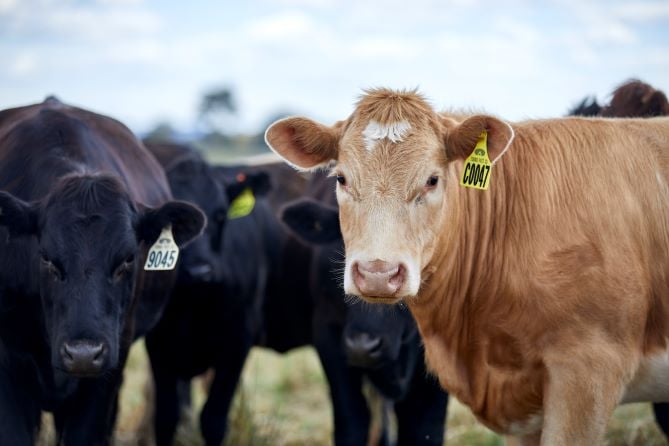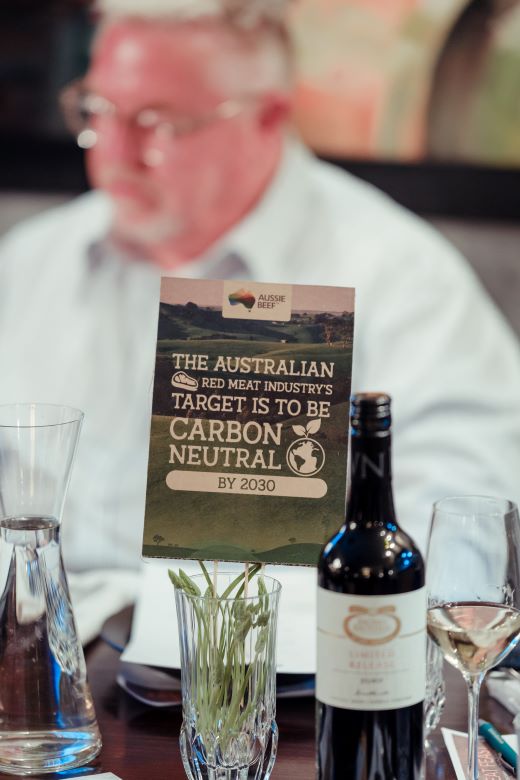Australian Beef and Lamb Sustainability - Peace of Mind for UK Consumers
Explore how Aussie beef and lamb provides a sustainable, safe and responsible choice for UK chefs and consumers.

Explore how Aussie beef and lamb provides a sustainable, safe and responsible choice for UK chefs and consumers.
Australian beef and lamb sustainability and Australian lamb sustainability are becoming increasingly important as more people attempt to understand the journey of the meat on their plates.
People are becoming more aware of things like beef traceability, lamb animal welfare and the impact of farming practices on global warming. Where and how meat is produced is gaining equal importance to quality and cost.
Ethical choices and sustainable practices are key factors, alongside food safety. Food Safety is an essential part of cooking in the home and especially in the food service sector. Professional chefs and home cooks want to be confident that the raw ingredients they bring into their kitchens are safe to be eaten and have been produced sustainably.
For many, the first thought in Australian beef sustainability, is that it has travelled a long way.
In the following blog, we uncover how Australian beef and lamb offer not only high-quality meat products, but peace of mind, rooted in sustainability, food safety and ethical standards.
A key concern for environmentally conscious cooks, chefs and consumers is the carbon footprint associated with red meat production.
The Australian beef and lamb industries have adopted innovative practices to reduce carbon emissions. Both industries are using sustainable farming techniques and investing in research for C02 emission reduction. Every effort is made to lessen the environmental impact of meat production across the board.
The aim is for the Australian red meat sector to be carbon neutral by 2030, which the Australian beef sustainability experts are well on the way to achieving. Meat and Livestock Australia (MLA) says that in 2020 the Australian red meat sector reduced CO2 emissions by 64.8% since the 2005 baseline.

Australian beef traceability is a high priority for UK shoppers and diners. Australia has a world leading tracking and quality assurance system that ensures the safety and integrity of Australian red meat.
The National Livestock Identification System (NLIS) is Australia’s system for the identification and tracking of cattle. An electronic tag is placed on every individual animal for its whole life.
This transparency ensures Australian beef and Australian lamb traceability. It means chefs and consumers in the UK can trace the origin of their meat back to individual farms if desired. They can be safe in the knowledge that the proper processes and standards have been followed.
UK consumers are known to prioritise animal welfare in their purchasing decisions. As are UK chefs and restaurateurs.
Beef animal welfare and lamb animal welfare is a high priority in Australia. Producers follow strict animal welfare standards established by industry bodies and government regulations.
The Australian Animal Welfare Standards and Guidelines were created to cover animal needs including feed and water; handling and management (including transport); and humane processing.
Australia is a vast country with large expanses of green space. Beef cattle and sheep are raised in spacious, natural environments. Farmed animals are given ample room to roam and graze.
Is Australian red meat safe to eat? Is lamb and beef food safety a priority for Australian farmers? The answer to both of these questions is yes.
Australia has a world-renowned reputation for producing high-quality red meat. It has a commitment to consistency, quality, and very tight supply chain integrity.
Australia’s animal health status is arguably one of the highest in the world. It is recognised as being free of common diseases.
Strict quarantine regulations mean that Australia is one of the few countries in the world to be categorised as a ‘Negligible Risk’ country by the World Organisation for Animal Health.

By reducing the carbon footprint associated with producing red meat Australian beef and lamb, the Australian red meat industry offsets any food miles accumulated in the journey from farm to plate.
All red meat from Australia is shipped to the UK in large containers. This is the most environmentally efficient form of transport with low emissions and other benefits. The bonus is that the meat is given time to age on its way over, resulting in it being more succulent and flavoursome.
Meat and Livestock Australia (MLA) has analysed the impact of importing red meat from Australia to the UK and argues that the carbon emissions are no higher than those created from domestic UK beef and lamb production.
Transport only accounts for 4% of carbon produced in farming and manufacturing red meat in Australia.
Australan farmers are committed to environmental sustainability and best practice, because their livelihoods depend on the land.
Sustainability therefore lies at the heart of Australian beef and lamb production. The vast landscapes and natural resources of Australia are carefully managed to minimise environmental impact.
Farmers prioritise land conservation, water efficiency, and preserving the natural landscape. These measures contribute to the protection of ecosystems and ensure a sustainable future for generations to come.
The Australian beef and lamb industry is investing in research to develop and establish practical on-farm options for reducing livestock methane emissions. Among a range of activities there is ongoing research into how dietary changes, including the use of some seaweed extracts, can naturally reduce methane.
Meat and Livestock Australia (MLA) invests up to $5.7 million a year in environment and sustainability research and development.
This commitment coupled with continuous investment in new technologies to make food safer and more sustainable means that the Australian red meat industry has never been more safe, sustainable, and reliable.